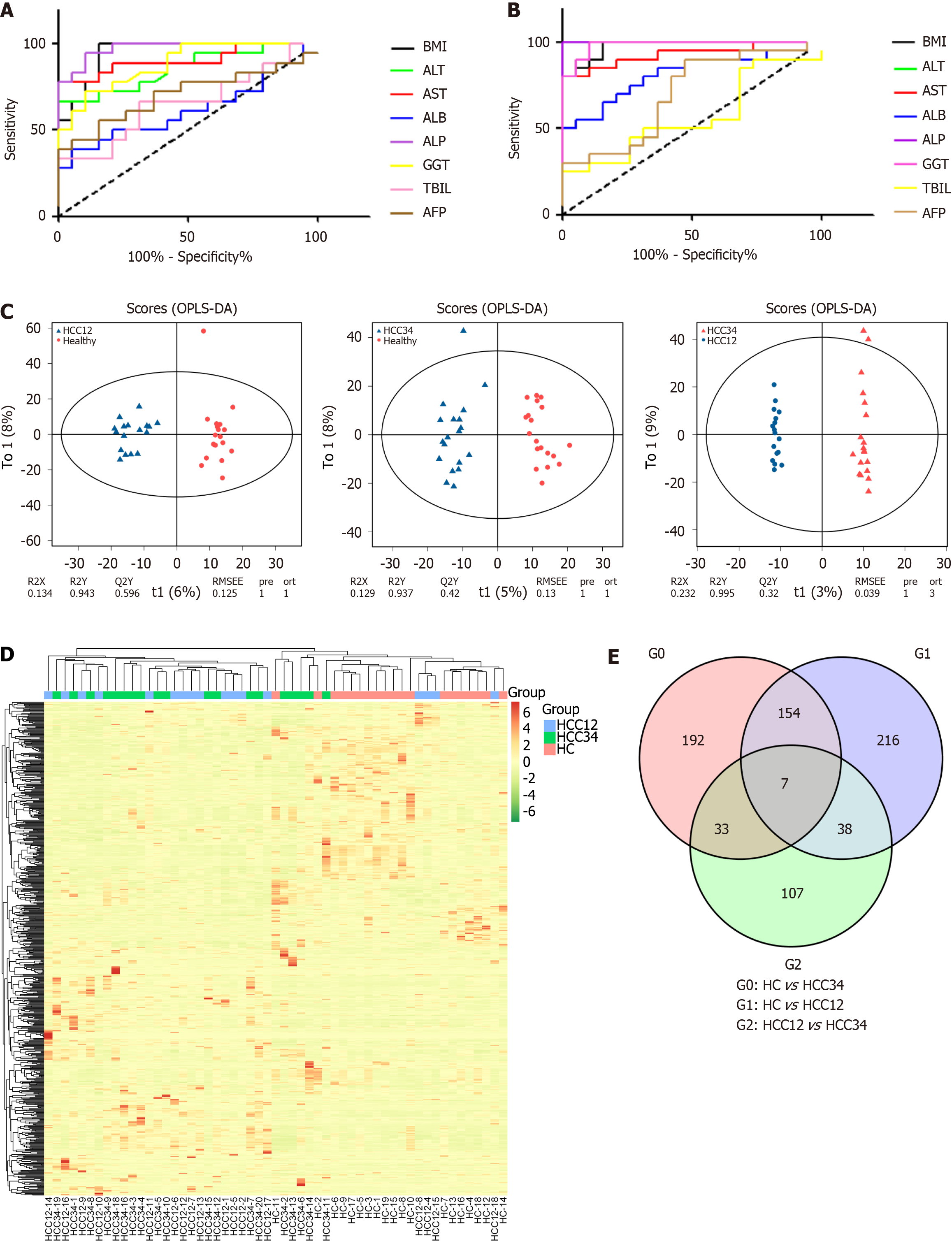Copyright
©The Author(s) 2025.
World J Gastroenterol. Apr 21, 2025; 31(15): 104996
Published online Apr 21, 2025. doi: 10.3748/wjg.v31.i15.104996
Published online Apr 21, 2025. doi: 10.3748/wjg.v31.i15.104996
Figure 1 Receiver operating characteristic analysis of serum indicators and alteration analysis of fecal metabolic profiling.
A and B: Receiver operating characteristic curves of healthy control (HC) vs comprising patients with stage I and II hepatocellular carcinoma (HCC12) (A) and HC vs comprising patients with stage III and IV hepatocellular carcinoma (HCC34) (B); C: Orthogonal partial least squares discriminant analysis score plots of HC vs HCC12, HC vs HCC34, and HCC12 vs HCC34; D: Clustered heatmap of the differential metabolites in each group; E: Venn diagram of the differential metabolites in each comparison. BMI: Body mass index; ALT: Alanine aminotransferase; AST: Aspartate aminotransferase; ALB: Albumin; ALP: Alkaline phosphatase; GGT: γ-glutamyl transferase; TBIL: Total bilirubin; AFP: Alpha-fetoprotein; OPLS-DA: Orthogonal partial least squares discriminant analysis; HC: Healthy control; HCC: Hepatocellular carcinoma; HCC12: Comprising patients with stage I and II hepatocellular carcinoma; HCC34: Comprising patients with stage III and IV hepatocellular carcinoma.
- Citation: Feng J, Wang JP, Hu JR, Li P, Lv P, He HC, Cheng XW, Cao Z, Han JJ, Wang Q, Su Q, Liu LX. Multi-omics reveals the associations among the fecal metabolome, intestinal bacteria, and serum indicators in patients with hepatocellular carcinoma. World J Gastroenterol 2025; 31(15): 104996
- URL: https://www.wjgnet.com/1007-9327/full/v31/i15/104996.htm
- DOI: https://dx.doi.org/10.3748/wjg.v31.i15.104996









